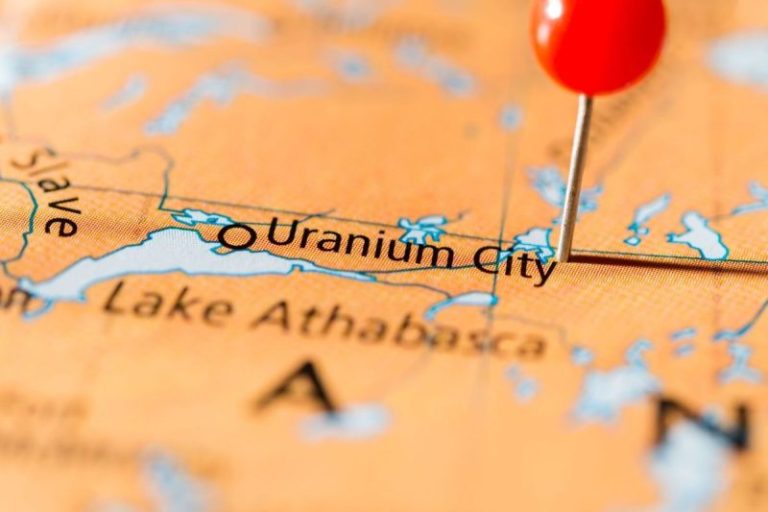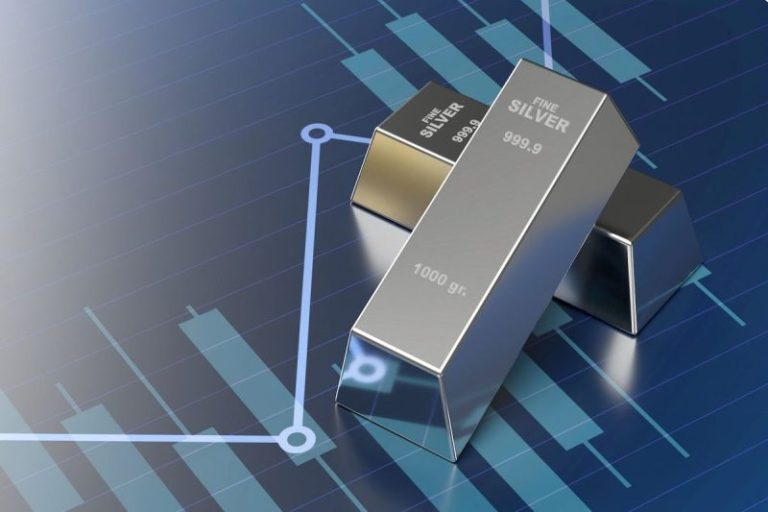There are many factors to consider when investing in silver-focused stocks, including the silver price outlook, the company’s management team and whether its assets are in one of the top silver-producing countries.
Location can be key, and knowing the top silver-producing countries can help investors made sound decisions. For example, high silver production in a particular nation might indicate mining-friendly laws or high-grade deposits.
So which country produces the most silver? In 2024, Mexico was once again the world’s leading silver-producing country, followed by China and Peru.
Increasing silver demand in recent years hasn’t been met by increases in mine production; global silver production totaled 25,000 metric tons in 2024, pulling back slightly during the period. As the majority of the world’s silver production comes as a byproduct from the mining of gold, copper, lead and zinc, silver production has largely been tied to fortunes in those other markets rather than its own fundamentals.
With prices of the metal rising to their highest level in more than a decade, the top silver countries could benefit.
Below is an overview of the countries that are already driving the mining output in 2024. Statistics are based on the latest report from the US Geological Survey, along with supporting data from Mining Data Online (MDO) and the UN Comtrade database.
The USGS reports silver production in metric tons while most companies report in ounces. As a point of reference, 1 metric ton of silver is equivalent to 35,274 ounces of the metal.
1. Mexico
Silver production: 6,300 metric tons
Mexico is the world’s largest silver producer with production of 6,300 metric tons of the precious metal in 2024, nearly double second-place China.
Silver has been an important commodity for the country for hundreds of years, with evidence of trade dating back to the 1500s. In 2024, the mining sector in Mexico contributed $312.46 billion pesos to the Mexican economy, and silver alone made up $68.24 billion pesos of that total.
The states of Zacatecas, Durango and Chihuahua account for 80 percent of the country’s total output of the metal. The country’s largest silver mine is Newmont’s (TSX:NGT,NYSE:NEM) Penasquito mine in Zacatecas. In 2024, the mine produced 33 million ounces (935.5 metric tons) of silver and is expected to deliver more than 28 million ounces in 2025.
Mexico is also home to Fresnillo (LSE:FRES), the world’s largest silver producer. In 2024, the company produced 56.3 million ounces (1,496 metric tons) of silver between its mines, which are all located in the country.
2. China
Silver production: 3,300 metric tons
China produced 3,300 metric tons of silver in 2024, a decline from the 3,400 metric tons it produced in 2023. According to Shanghai Metal Market (SMM), the drop off is part of a longer trend that is owed to lower silver grades as older mines begin to deplete reserves of the metal.
Most silver is produced as a byproduct metal from the mining of lead, copper, zinc and gold. Of the few silver primary operations in the country, Silvercorp Metals’ (TSX:SVM,NYSEAMERICAN:SVM) Ying mining district is the largest, hosting seven underground mines and two processing plants.
In its fiscal year ended March 31, 2025, the Ying mining district produced 6.95 million ounces (197 metric tons) of silver, up 17 percent year-over-year. The increase was supported in part by an extension to the number two mill in November 2024.
3. Peru
Silver production: 3,100 metric tons
Peru produced 3,100 metric tons of silver in 2024, making it the world’s third largest silver country. Its 2024 production was down from 3,200 metric tons in 2023, in part due to declining grades and social unrest.
Overall, the mining industry plays a significant role in the Peruvian economy, accounting for 9.5 percent of its GDP. In 2024, total mineral exports from the country were tallied at US$49 billion, with copper making up more than half of the value of trade and silver accounting for approximately US$1.3 billion.
Silver production in Peru is primarily a byproduct of copper mining. The largest operation in the country is the Antamina mine, a joint venture between BHP (ASX:BHP,NYSE:BHP,LSE:BHP), Glencore (LSE:GLEN,OTC Pink:GLCNF), Teck (TSX:TECK.B,TSX:TECK.A,NYSE:TECK) and Mitsubishi (TSE:8058). In 2024, the mine produced 11.36 million ounces of silver.
4. Bolivia
Silver production: 1,300 metric tons
Bolivia’s silver production totaled 1,300 metric tons in 2024, a slight decline from 2023’s 1,350 metric tons, tying it with Poland for the fourth highest silver producing country. The resource industry makes up a substantial portion of Bolivia’s exports. Silver exports alone generated US$1.2 billion for Bolivia’s economy in 2024.
Bolivia’s largest mine is the San Cristóbal silver-lead-zinc mine in Potosí, which produced 16.8 million ounces of silver in 2024, up 33 percent year-over-year. Private company San Cristobal Mining acquired the mine from Sumitomo (TSE:8053) in early 2023.
Another significant silver operation in Bolivia is Andean Precious Metals’ (TSXV:APM,OTCQX:ANPMF) San Bartolomé silver-gold operation. San Bartolomé’s production has steadily decreased from 5.47 million ounces in 2020 to 4.32 million ounces in 2024, during which time it transitioned from mining to processing material from its fines disposal facility and third parties.
4. Poland
Silver production: 1,300 metric tons
Silver production in Poland was 1,300 metric tons in 2024, just below the 1,320 metric tons it registered the previous year. While its output comes in significantly below the top three silver countries, Poland holds the world’s third highest silver reserves at 61,100 metric tons.
In total, the mining sector accounts for 7 percent of Poland’s GDP. In 2024, silver exports rose to 1,328.27 metric tons from 1,256.25 metric tons in 2023 and represented a value of US$1.2 billion.
KGHM Polska Miedz (FWB:KGHA) is Poland’s top silver company and one of the world’s top silver producers, producing the metal as a by-product at its Polish copper mines, including the Polkowice-Sieroszowice mine. According to the World Silver Survey, KGHM produced 1,341 metric tons of silver in 2024 between its Polish and international operations.
6. Chile
Silver production: 1,200 metric tons
Chile produced 1,200 metric tons of silver in 2024, down from the 1,260 metric tons in 2023.
Mining is a significant contributor to the Chilean economy. In 2024, the sector accounted for 14 percent of the nation’s GDP and was a driving force behind the country’s overall 5.6 percent growth rate.
With 85 percent of Chilean silver output coming as a byproduct of copper mining, declines in recent years have been owed to production issues and low prices in the copper sector. According to Reuters, copper output from state-run mining company Codelco fell to a 25 year low in 2023 and struggled to recover.
At Chuquicamata, one of the company’s largest operations, silver production gradually declined from its peak of 10.91 million ounces in 2019 to 8.14 million ounces in 2023, before plunging to 5.7 million ounces in 2024.
6. Russia
Silver production: 1,200 metric tons
Russia produced 1,200 metric tons of silver in 2024, a slight decrease from the 1,240 metric tons it produced the previous year.
Mangazeya Plus is the country’s largest silver producer from its portfolio of mines in the country, including its largest silver operation, the Dukat mine, which produced an estimated 7.7 million ounces of silver in 2023.
Prior to 2024, the owner of these assets was Kazakhstan-based Polymetal International, now named Solidcore Resources. However, due to operational challenges associated with sanctions against Russian metals exports, the company sold all of its Russian mining assets to Mangazeya Plus.
8. United States
Silver production: 1,100 metric tons
The United States produced 1,100 metric tons of silver in 2024, an increase from the 1,020 metric tons mined the previous year. Silver is mined in 12 states, with Alaska and Idaho topping the list of regional producers.
Production of silver came from four silver-primary mines, with additional amounts produced as a byproduct of gold and base metals at 31 other operations.
The largest silver operation in the United States is Hecla Mining’s (NYSE:HL) Greens Creek silver mine in Southern Alaska. In 2024, the mine produced 8.48 million ounces (240 metric tons) of silver, as well as several other metals as by-products of its silver operations.
In terms of economic contribution, silver contributed US$960 million to the US economy in 2024, with the majority of the metal destined for domestic markets, with just 140 metric tons being exported.
9. Australia
Silver production: 1,000 metric tons
Australia produced 1,000 metric tons in 2024, just 30 metric tons fewer than registered in 2023.
According to the Reserve Bank of Australia, mining holds the largest share of the nation’s GDP with 12.2 percent, and resources make up 59.2 percent of the country’s total exports. However, like the United States, the majority of silver is used domestically for manufacturing and investment.
Australian silver production also comes as a byproduct of mining other metals like gold, copper and other base metals. South32’s (ASX:S32,OTC Pink:SHTLF) Cannington lead-silver-zinc mine is by far the largest silver operation in Australia, producing 12.67 million ounces of silver in 2024.
9. Kazakhstan
Silver production: 1,000 metric tons
Kazakhstan produced 1,000 metric tons of silver in 2024, up from 985 metric tons in 2023. Output in the country has risen significantly since 2020, when it produced just 435 metric tons of the precious metal.
The largest silver mining operation in the country is the Kazzinc Complex, a 70/30 joint venture between Glencore and the state-run Tau-Ken Samruk. In 2024, the mine produced 3.34 million ounces of silver, a sizable increase from the 2.73 million ounces produced in 2023.
Overall, the mining sector’s contribution to the Kazakh economy has exploded in recent years. According to the USGS Kazakhstan 2022 Mineral Yearbook released in March 2025, mineral exports were pegged at US$84.6 billion in 2022, a 40.2 percent increase compared to 2021 and 68 percent of the country’s total exports.
Securities Disclosure: I, Dean Belder, hold no direct investment interest in any company mentioned in this article.
This post appeared first on investingnews.com










